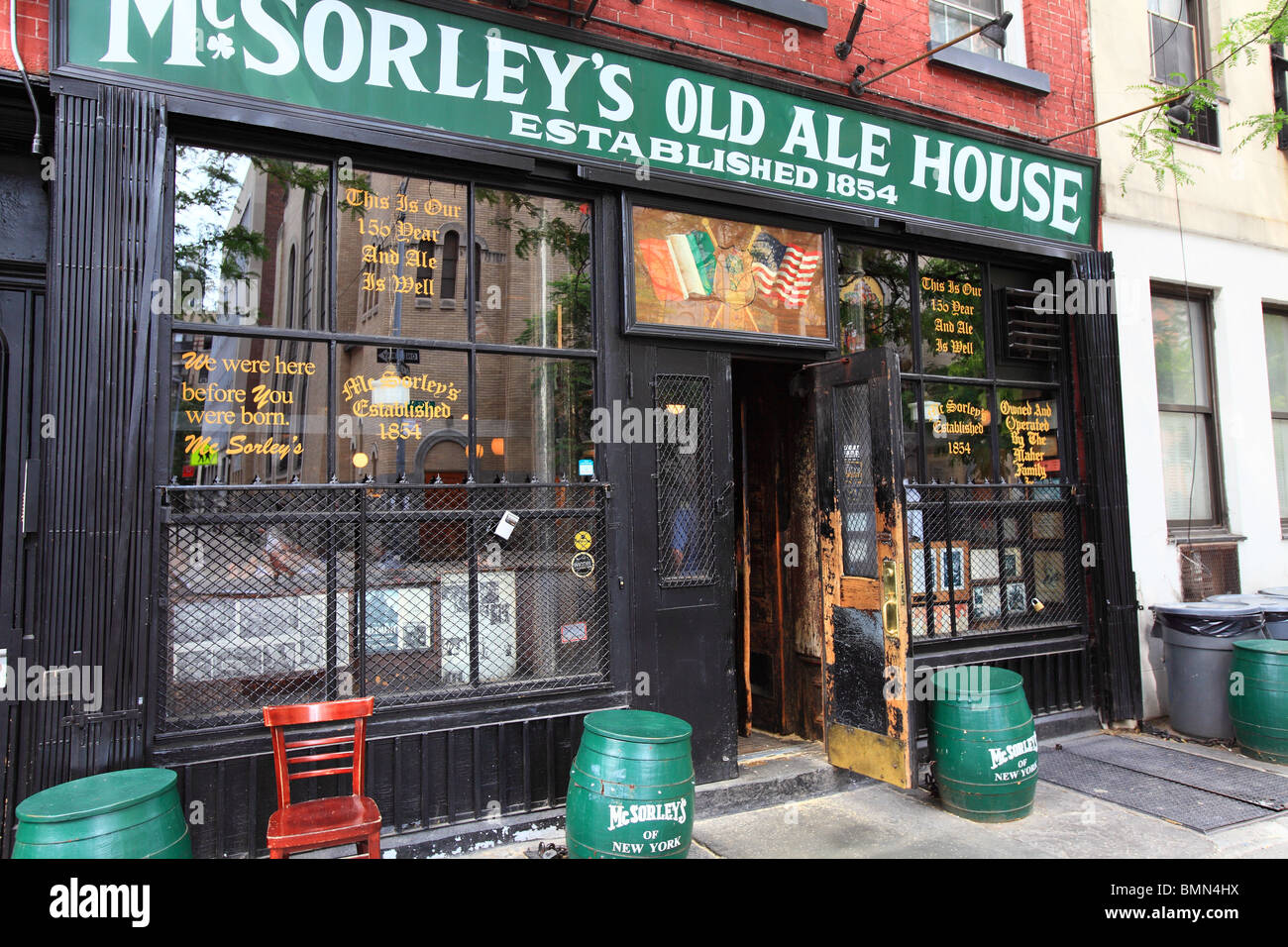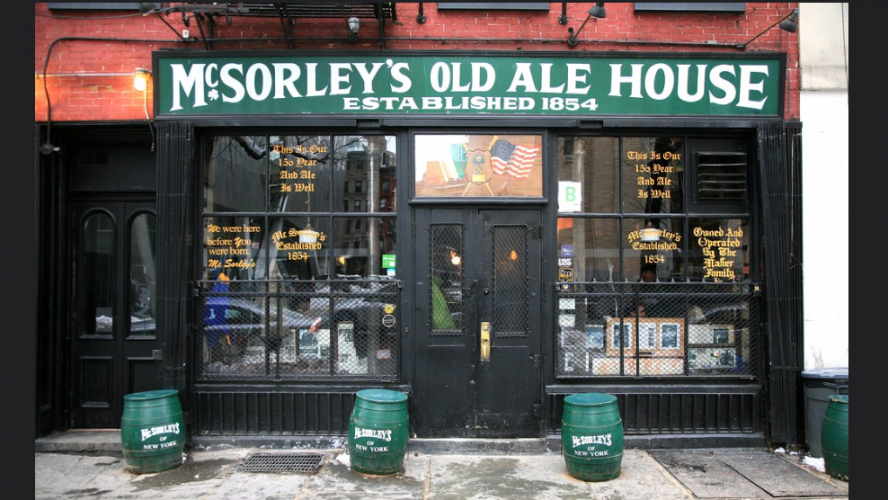Table Of Content

This case changed the law so that no public establishment can ban a person based on gender, creed, sex, or religion. Although Old John did not consider himself retired until just a few years before he died, he gave up day-in-and-day-out duty back of the bar around 1890 and made his son, William, head bartender. Bill McSorley was the kind of person who minds his own business vigorously. He inherited every bit of his father’s surliness and not much of his affability.
Beer Crawl: Some Of The Best Places To Drink In Lower Manhattan - Forbes
Beer Crawl: Some Of The Best Places To Drink In Lower Manhattan.
Posted: Mon, 04 Dec 2023 08:00:00 GMT [source]
A Tour of McSorley’s
When one guest ordered a light and a dark beer for himself and someone else, they seemed surprised when they were each handed two beers. The bartender then explained that they always give people two beers each. According to Eater, each mug holds roughly 6 ounces per glass — a US pint holds 16 ounces — which makes each drink easier to finish and carry around the bar. When he died in 1883, his chair was retired and still sits behind the bar. In a city filled with pricey craft cocktails and thousands of beers on tap, McSorley’s lack of choice—and the $5.50-per-drink price tag—is as refreshing as their light ale, which comes in pairs. John kept horses out back and his son, Bill, who eventually took over the bar from his father, was an avid reader.
The Wishbones of McSorley's Old Ale House
To continue operating and to satisfy the beer desires of its customers, Mc Sorley’s sold “near beer.” Near beer was a malt beverage with little or no alcohol. At 15 East 7th Street, located in the shadow of The Cooper Union is McSorley’s Old Ale House, an enduring remnant of the city’s rich culture, history, and the embodiment of the American dream. When John McSorley made his epic journey from Dublin, Ireland to New York with his wife Mary, he may have only imagined his tavern would become a hallmark of the city for the next 150 plus years. In New York City, taverns come and go and few may stand the test of time. Some have occupied their lots longer than McSorley’s, like the Ear Inn at 326 Spring Street or Fraunces’ Tavern at 54 Pearl—one of the oldest remaining structures in Manhattan, dating as far back as 1785. Yet few establishments will maintain their original spirit like McSorley’s saloon, a spirit, still carried forward and owned by the Maher family.
I was overall pleasantly surprised by the burger at McSorley's, but I wish the cheese had been more melted.
10 of the Oldest Bars in NYC - Page 4 of 10 - Untapped New York
10 of the Oldest Bars in NYC - Page 4 of 10.
Posted: Thu, 03 Aug 2023 07:00:00 GMT [source]
When they returned from the war, the remaining soldiers celebrated by going to McSorley’s, ordering a hearty smattering of light and dark beers and taking down their wishbones. You will notice no stools, standing room only (three deep at times) — the original taps, no longer in use. The old ice chest, houses sodas, the only drink other than ale permissible. You’ll find no cash register at McSorley’s — there’s never been one and probably never will. Above the bar, wishbones gather many generations worth of dust from their perch on the old gas lamp.

History of New York City
Nestled amongst a formidable collection of bric-a-brac lie three small vessels. Each contains the earthly remains of a McSorley’s regular whose final wish was to be laid to rest amongst the sawdust and tchotchkes. Houdini good-spiritedly agreed to the challenge and let the police officer shackle him.
Even world-renowned escape artist, Harry Houdini, left his handcuffs chained to the bar rail - where they remain to this day. Before going to McSorley's myself, I half-expected to find a rowdy group of drunk people dressed up for St. Patrick's Day and drinking overpriced beer. What I experienced couldn't have been more different than my expectations.
Health & Wellness
There is vastly more than meets the eye and certainly more than a single visit or even a hundred can possibly reveal. The inspiration for numerous books, paintings and poems, McSorley’s retains, to this day, a static serenity. It is an oasis in an age of disposable objects, quick fixes and attention spans that sputter and stall in short order.
McSorley’s continued to be located in the East Village and was previously known as “the 5 Points Neighborhood.” At the time McSorley’s was founded, the 5 Points neighborhood was considered a slum where the poor and immigrants resided. It was a tough neighborhood with gangs that fought to take control of the district. There were social tensions between different religious and ethnic groups, and the Irish unleashed a wave of nativist sentiment in their day to day activities. After work, a stop at McSorley’s was a relief for the poor working-class male as it allowed him to escape the realities of New York City and escape into the world of “home” with other immigrants. It stated that the subjected establishments had to provide “sanitary facilities” for their employees … but not necessarily for their customers. It would take another 16 years before McSorley’s would finally install a women’s restroom.
McSorley’s occupies the ground floor of a red brick tenement at 15 Seventh Street, just off Cooper Square, where the Bowery ends. In eighty-six years it has had four owners—an Irish immigrant, his son, a retired policeman, and his daughter—and all of them have been opposed to change. It is equipped with electricity, but the bar is stubbornly illuminated with a pair of gas lamps, which flicker fitfully and throw shadows on the low, cobwebby ceiling each time someone opens the street door.
With the Supreme Court ruling of 1970 in which allowed women entry into McSorley’s, the bathroom became coed. Sixteen years later, a lady’s room was installed in the location of the old galley. The menu of McSorley’s consists of pub fare…nothing fancy, but always good.
Sometimes, in the afternoon, if the weather was good, he would shuffle into the bar, a sallow, disenchanted old man, and sit in the Peter Cooper chair with his knotty hands limp in his lap. The customers were sure he was getting ready to die, but when he came in they would say, “You looking chipper today, Billy boy,” or something like that. He rarely spoke, but once he turned to a man he had known for forty years and said, “Times have changed, McNally.” “You said it, Bill,” McNally replied. As close as his friends could figure it, his age was seventy-six.
Sometimes, for the benefit of a newcomer, one of these customers would show Bill off, shouting, “Hey, Bill, lend me fifty dollars! Then the customer would turn proudly to the newcomer and say, “See? He did not have a peephole door, nor did he pay protection, but McSorley’s was never raided; the fact that it was patronized by a number of Tammany politicians and minor police officials probably gave it immunity. Bill would sometimes take an inexplicable liking to a customer. Around 1911 a number of painters began hanging out in McSorley’s.
There were also no female bartenders until the mid-'90s, according to Bedford + Bowery. Health inspectors also had a problem with another McSorley’s regular—Minnie the Second, one of many cats who have called the pub home over the years. John McSorley loved cats, keeping up to 18 in the bar at once—a quirk immortalized by John French Sloan in his 1929 painting McSorley’s Cats.
The anarchist, who thought no man was as foul as a Tammany boss, smiled and thanked him. A police captain once took it upon himself to warn Bill against Havel. He’s in favor of blowing up every bank in the country.” “So am I,” said Bill. He owned as many as eighteen at once and they had the run of the saloon.
Among them were John Sloan, George Luks, Glenn O. Coleman, and Stuart Davis, the abstractionist. They were all good painters, they did not put on airs, and the workingmen in the saloon accepted them as equals. One night, Hippolyte Havel, the anarchist, came in with the painters. Havel was a long-haired, myopic, gentle-mannered Czech whose speeches often got him in trouble with the police. Playing safe, the painter said Havel was a politician, more or less. Most nights, after making a fiery speech in Union Square, he would hurry down to McSorley’s.
No comments:
Post a Comment